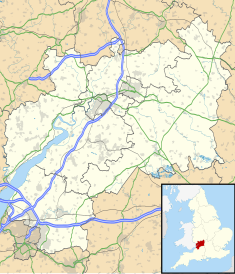
Chipping Campden is a market town in the Cotswold district of Gloucestershire, England. It is notable for its terraced High Street, dating from the 14th century to the 17th century.

The Cotswolds was a constituency in Gloucestershire in the House of Commons of the UK Parliament. It was represented by Sir Geoffrey Clifton-Brown, a Conservative, since its 1997 creation.
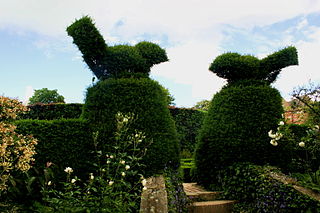
Hidcote Manor Garden is a garden in the United Kingdom, located at the village of Hidcote Bartrim, near Chipping Campden, Gloucestershire. It is one of the best-known and most influential Arts and Crafts gardens in Britain, with its linked "garden rooms" of hedges, rare trees, shrubs and herbaceous borders. Created by Lawrence Johnston, it is owned by the National Trust and is open to the public.
Major Lawrence Waterbury Johnston was a British garden designer and plantsman. He was the owner and designer of two influential gardens – Hidcote Manor Garden in Britain and Jardin Serre de la Madone in France.

Mickleton is a village and civil parish in the Cotswold District of Gloucestershire, England. The village is the northernmost settlement in Gloucestershire, lying close to the borders with Worcestershire and Warwickshire, 3 miles (4.8 km) north of Chipping Campden, 8 miles (13 km) east of Evesham and 8 miles (13 km) south of Stratford-upon-Avon. The population of the parish was 1,677 at the 2011 Census.
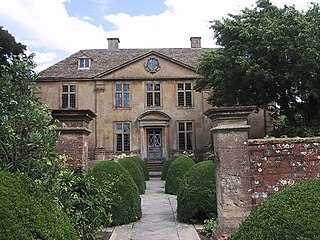
Tintinhull Garden, located in Tintinhull, near Yeovil in the English county of Somerset, is a small 20th century garden surrounding a 17th-century Grade I listed house. The property is in the ownership of the National Trust. It is visited by around 25,000 people per year.
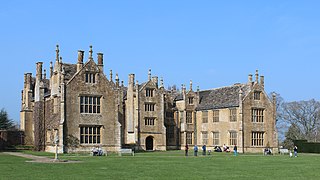
Barrington Court is a Tudor manor house begun around 1538 and completed in the late 1550s, with a vernacular stable court (1675), situated in Barrington, near Ilminster, Somerset, England.

Norman Jewson was an English architect-craftsman of the Arts and Crafts movement, who practised in the Cotswolds. He was a distinguished, younger member of the group which had settled in Sapperton, Gloucestershire, a village in rural southwest England, under the influence of Ernest Gimson. Surviving into old age, he brought their ideas and working methods into the second half of the twentieth century. His book of reminiscences has become established as a minor classic of the English Arts and Crafts movement. His repair of the Tudor Owlpen Manor in 1925–26 is often regarded as his most representative and successful work.

Lytes Cary is a manor house with associated chapel and gardens near Charlton Mackrell and Somerton in Somerset, England. The property, owned by the National Trust, has parts dating to the 14th century, with other sections dating to the 15th, 16th, 18th, and 20th centuries. "Yet all parts blend to perfection with one another and with the gentle sunny landscape that surrounds them," comments Nikolaus Pevsner. The House is listed as Grade I by English Heritage.

Cornwell is a small village and civil parish about 2.5 miles (4 km) west of Chipping Norton in the West Oxfordshire district of Oxfordshire, near the county border with Gloucestershire. The 2001 Census recorded the parish's population as 66.
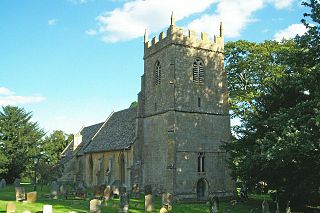
Ebrington is a village and civil parish in Gloucestershire, England, about 2 miles (3.2 km) from Chipping Campden. It has narrow lanes and tiny streets of Cotswold stone houses and cottages, many of which are thatched.
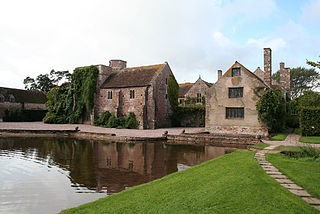
Cothay Manor is a grade one listed medieval house and gardens, in Stawley, near Wellington, Somerset. The manor grounds consist of almost 40 acres and include cottages, outbuildings, stables, and 12 acres of gardens.

Rose Hill Manor, now known as Rose Hill Manor Park & Children's Museum, is a historic home located at Frederick, Frederick County, Maryland. It is a 2+1⁄2-story brick house. A notable feature is the large two-story pedimented portico supported by fluted Doric columns on the first floor and Ionic columns on the balustraded second floor. It was the retirement home of Thomas Johnson (1732–1819), the first elected governor of the State of Maryland and Associate Justice of the United States Supreme Court. It was built in the mid-1790s by his daughter and son-in-law.

Campden was, from 1894 to 1935, a rural district in the administrative county of Gloucestershire, England. The district lay on the north-eastern boundary of Gloucestershire, and consisted of three separate areas nearly surrounded by the counties of Warwickshire and Worcestershire. The county and district boundaries were simplified in 1931 and the district was abolished in 1935.

Hidcote Bartrim is a hamlet and former civil parish, now in the parish of Ebrington, in the Cotswold district of Gloucestershire, England. The nearest town is Chipping Campden, which is approximately 2.75 miles (4.43 km) south-west from the village. The village is on the Gloucestershire-Warwickshire border. It should not be confused with Hidcote Boyce, a similarly sized village roughly 0.5 miles (0.8 km) south of Hidcote Bartrim. In 1931 the parish had a population of 47.

Ohinetahi is a valley, historic homestead, and formal garden on Teddington Road, Governors Bay, Christchurch, Canterbury region, New Zealand. Ohinetahi valley is situated at the head of Lyttelton Harbour, at the base of the Port Hills. While the Ohinetahi Homestead is considered to be a significant historic building in the small settlement of Governors Bay, the formal garden of Ohinetahi is considered to be one of New Zealand's finest. Amongst the early owners of Ohinetahi were Canterbury pioneer William Sefton Moorhouse and Thomas Potts, New Zealand's first conservationist. Sir Miles Warren, architect of the Christchurch Town Hall, was the last private owner, and gifted it to New Zealand.
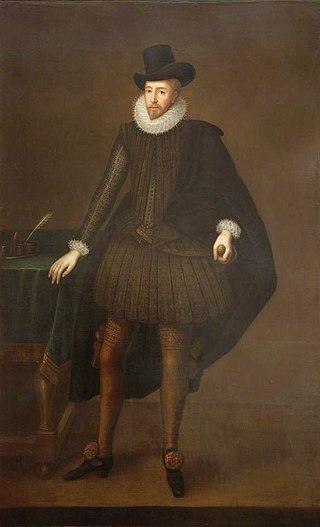
Baptist Hicks, 1st Viscount Campden was an English cloth merchant and politician who sat in the House of Commons between 1621 and 1628. King James I knighted Hicks in 1603 and in 1620 he was created a baronet.
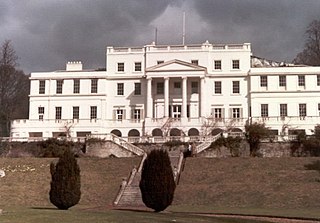
Linton Park, formerly Linton Place or Linton Hall, is a large 18th-century country house in Linton, Kent, England. Built by Robert Mann in 1730 to replace a much earlier building called 'Capell's Court', the estate passed through the ownership of several members of Mann's family before coming into the Cornwallis family. The house was enlarged to its current size in 1825.

Highnam Court is a Grade I listed country house in Highnam, Gloucestershire, England, constructed in the 17th century. The estate passed from the Cooke family to the Guise family and, in the mid-19th century, was purchased by a member of the Gambier-Parry family.

Phyllis Emily Reiss born Phyllis Emily Lucas was a British garden designer noted for her work at her own Tintinhull Garden, and Montacute House.

